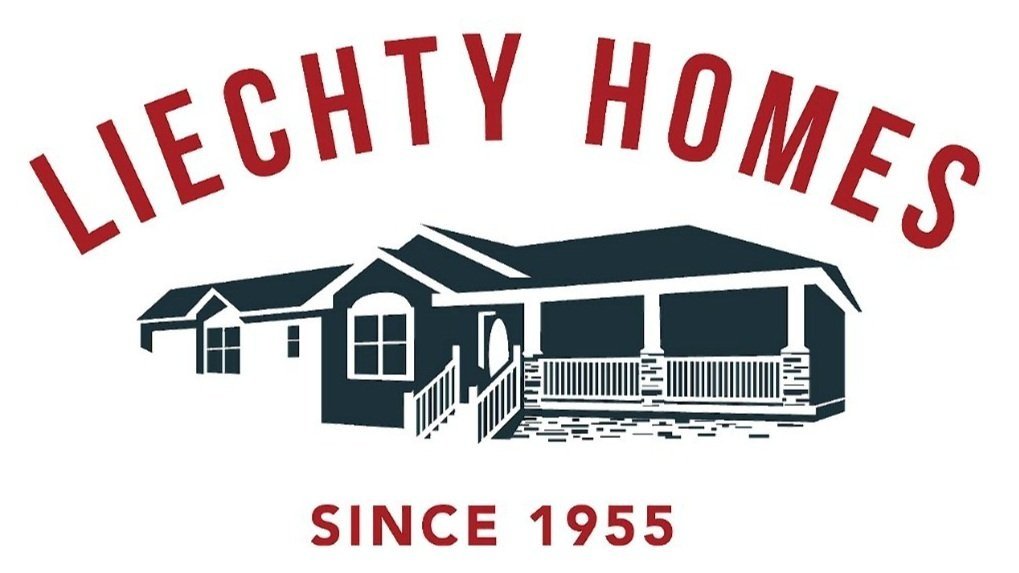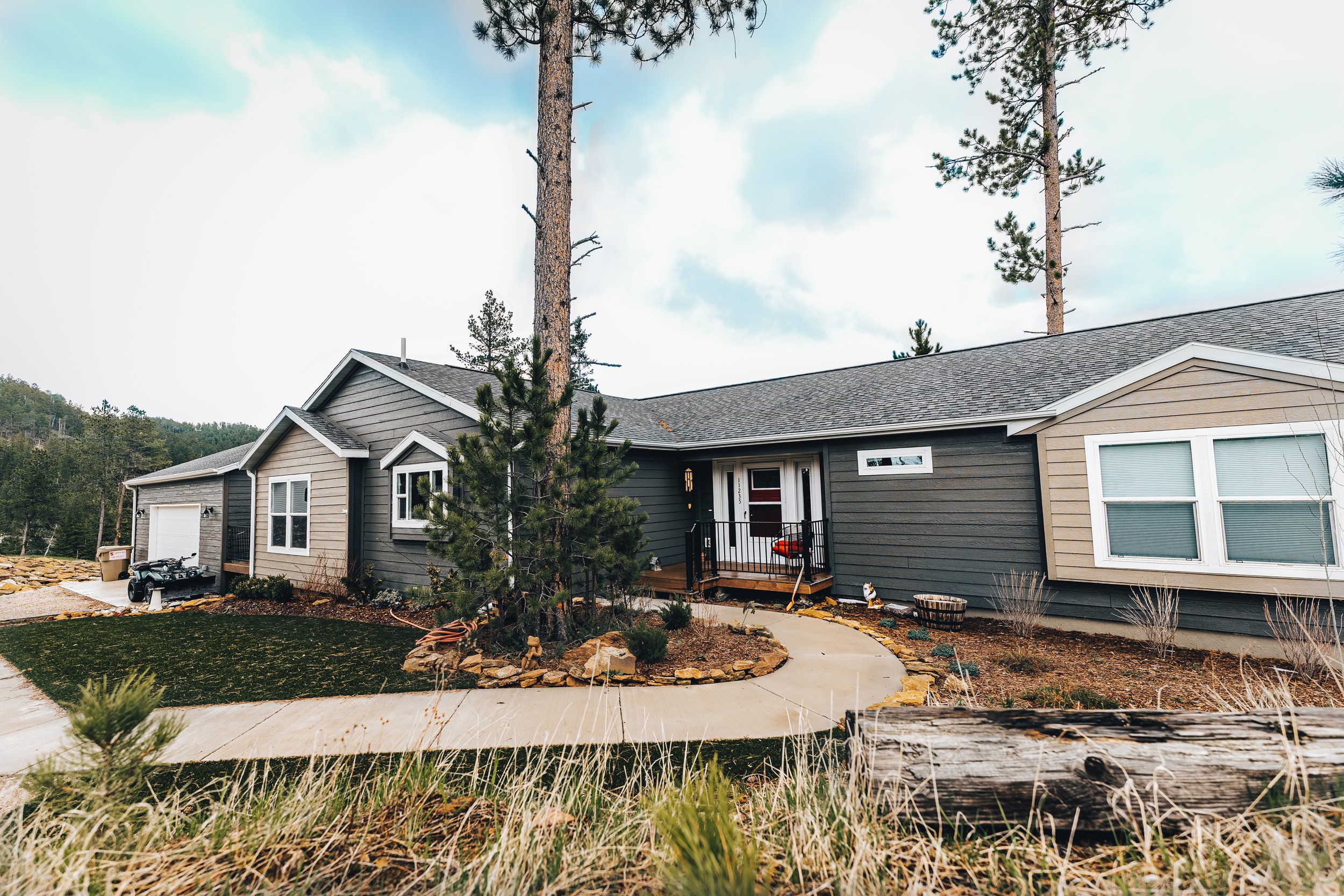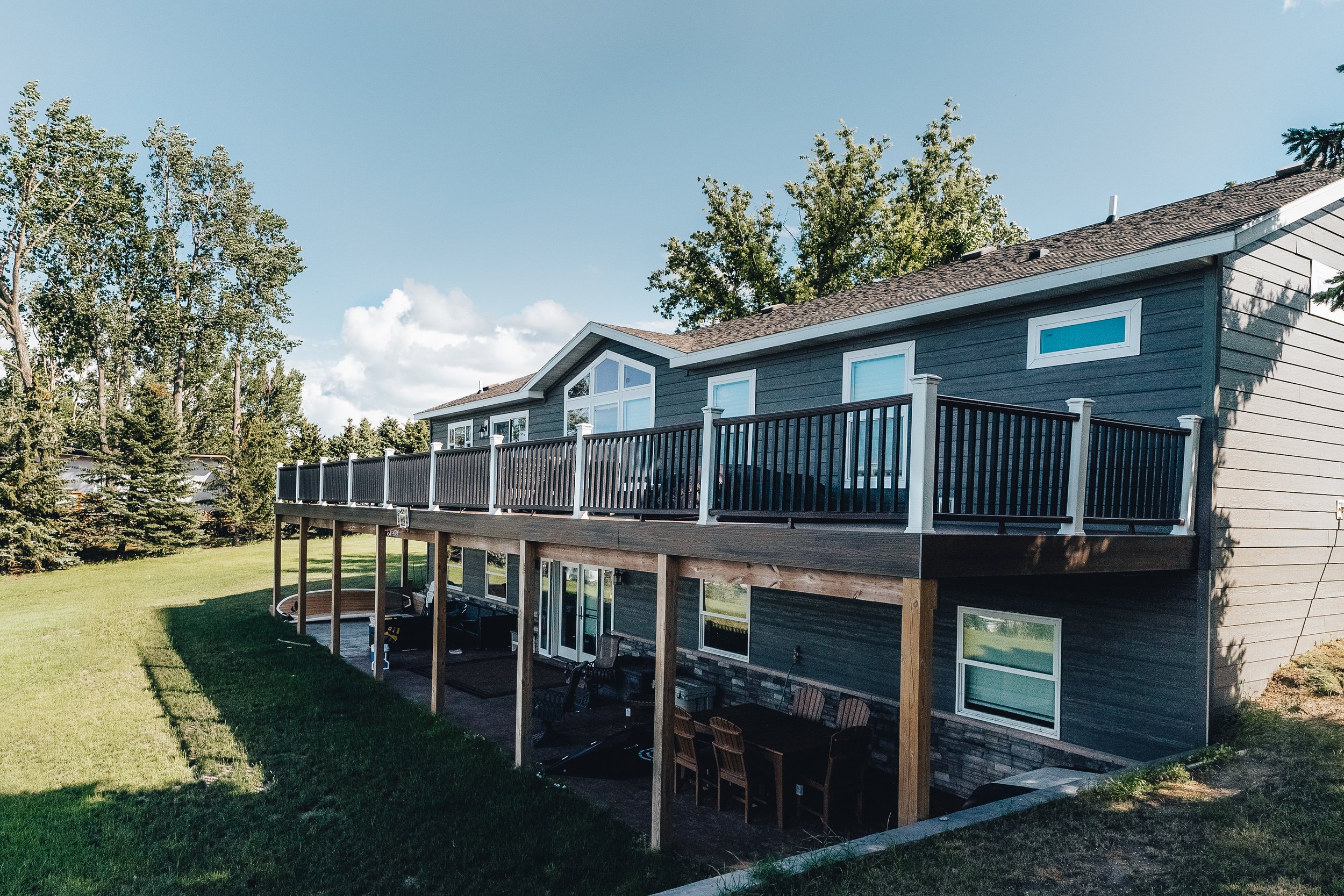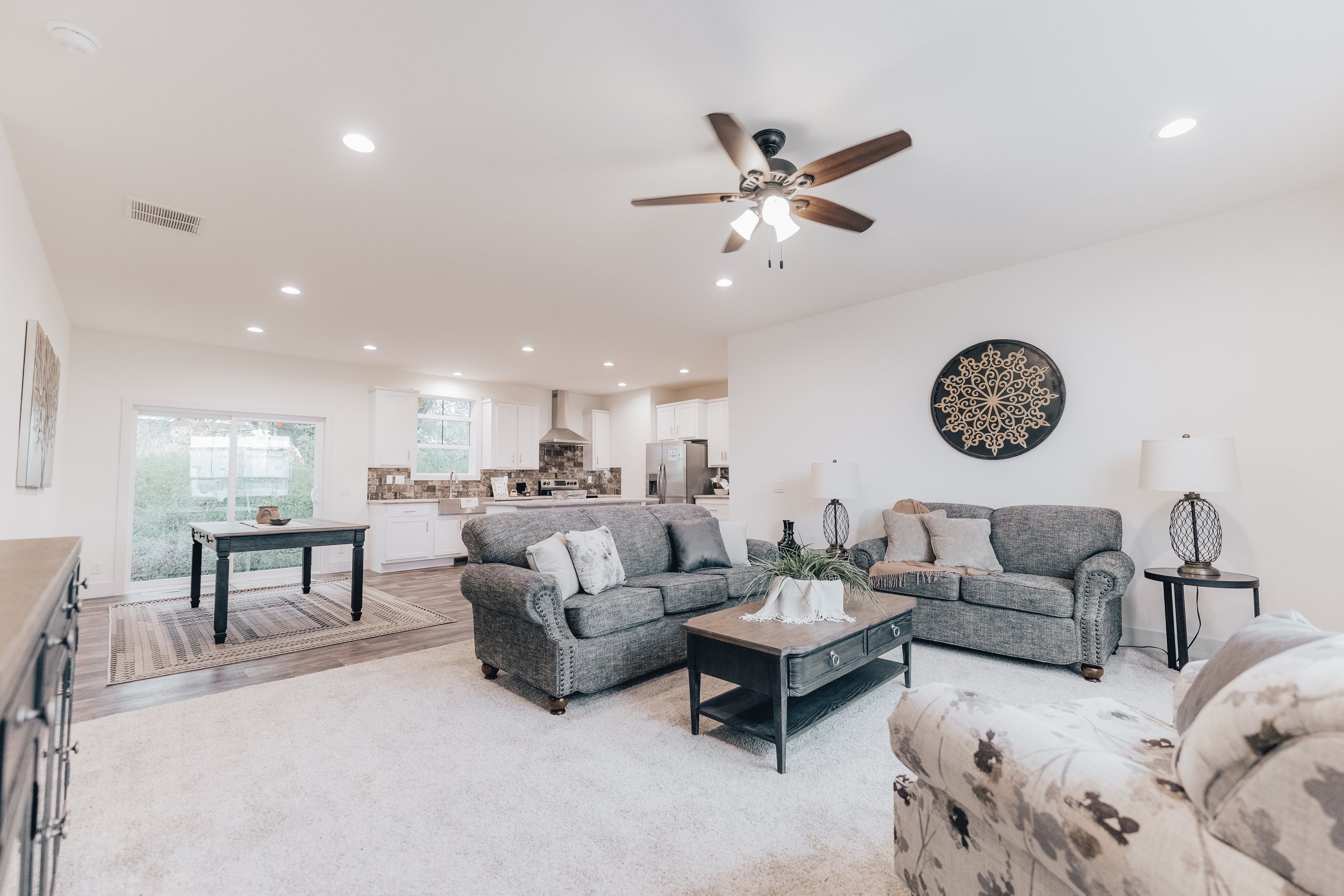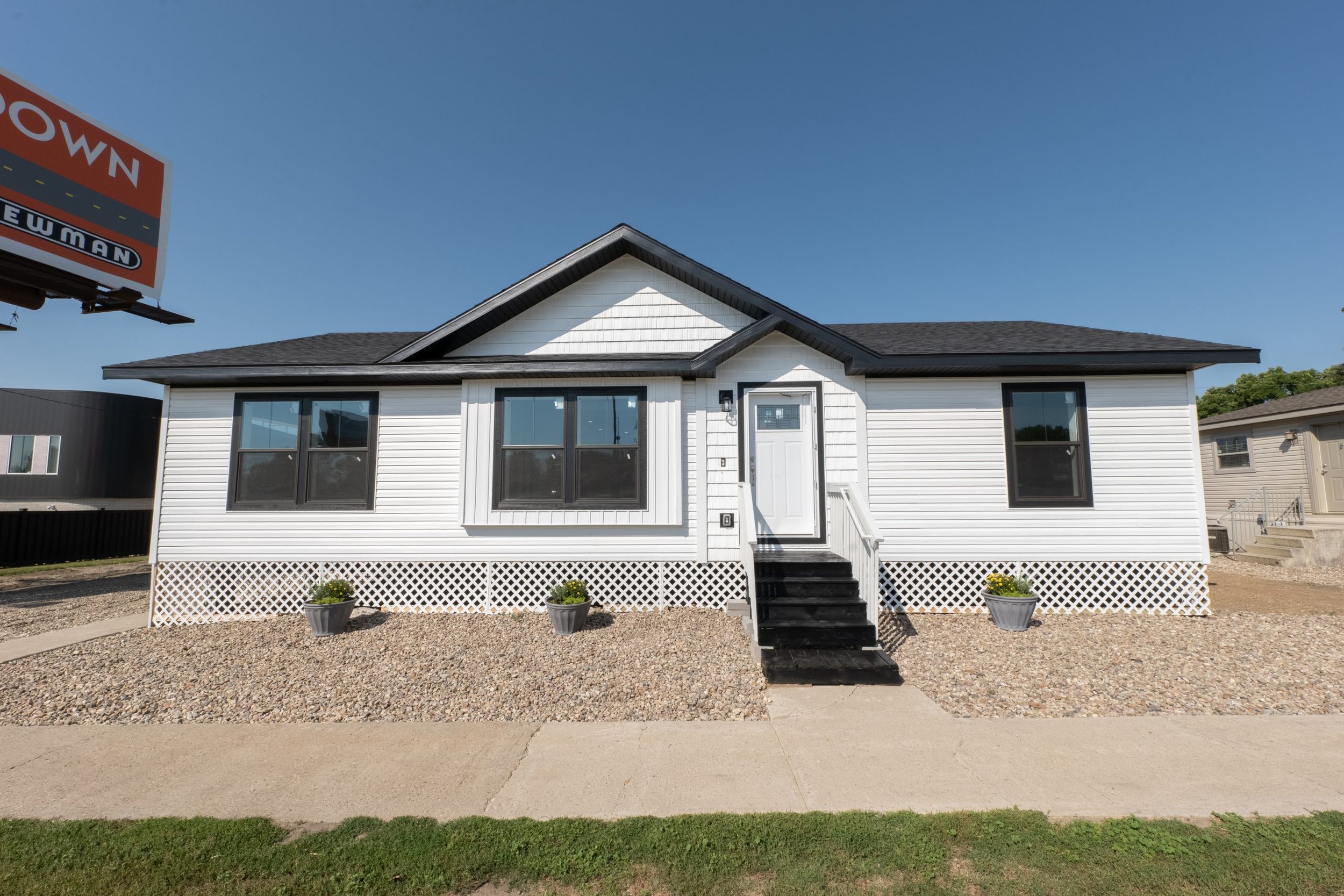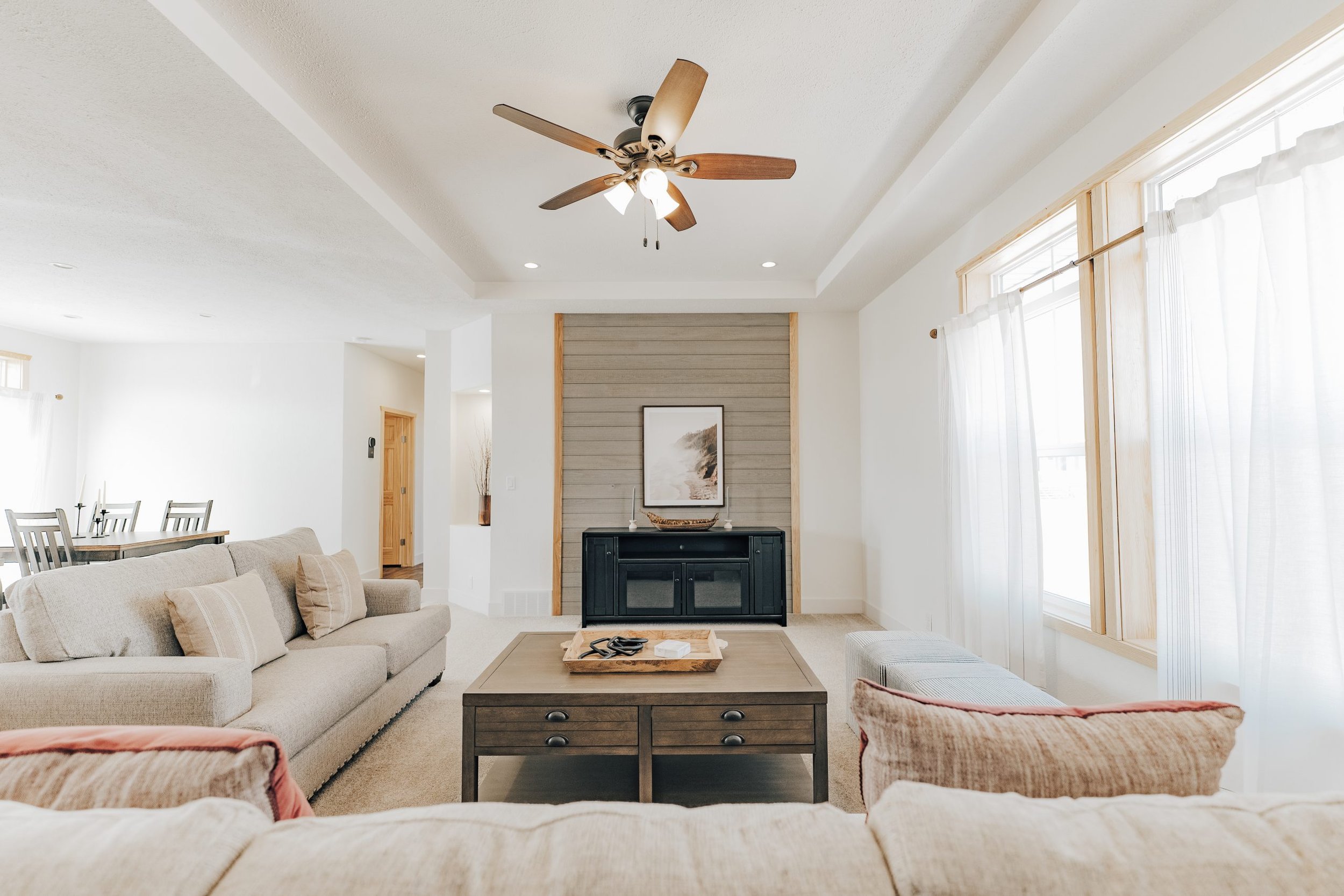What Is a Manufactured Home?
There are several terms that are often used to refer to factory-built housing. “Mobile,” “manufactured,” and even “trailer” are words often thrown around interchangeably as if they all refer to the same type of building structure. These terms, however, actually describe three distinct types of housing, and tell an interesting story of the journey that led from the camping trailers of the early 20th century to today’s manufactured home, which is nearly indistinguishable from site-built housing.
From Trailers to Mobile Homes
It is true that mobile and manufactured homes were born out of the camping trailers that first became popular in the early 1900s. As car ownership became more common in the United States, so did these trailers which were intended primarily to allow vacationers to pull a trailer behind their car for camping—basically like a modern RV. The concept of mobile homes as a longer-term housing option increased in popularity in the World War II era, as people were migrating to areas of the county to work in factories to assist with defense production. As cities saw their populations soar due to the influx of workers, mobile homes emerged as the easiest option to quickly accommodate them. As housing shortages continued across the United States and post-war construction projects continued to require accommodations for workers, mobile homes continued to provide a solution to the problem.
Photo of Liechty Homes Founder Silas Liechty Downtown Jamestown in late 1960s
From Mobile to Manufactured Homes
Their use as longer-term housing instead of structures that needed to regularly be moved meant that the homes could be built larger than they had been previously. Prior to World War II mobile homes were exclusively single-wide structures built to a maximum of eight feet in width. Over time, the size increased to 10, then 12, and ultimately the 14-16 foot wide homes that are built today. Early mobile homes were usually no longer than 20 feet long. Today’s manufactured home can be as short as 40 feet and as long as 76 feet. The demand for larger dwellings also prompted the introduction of the double-wide manufactured home-a house that is built in two sections on two frames that are transported separately and joined together on site. The increase in size over time has been dramatic—the first mobile homes were 280 square feet on average, whereas today a double-wide home is usually between 1500-2000 square feet but can be built even larger.
The HUD Code
The increasing demand for manufactured housing brought increased scrutiny to the industry. Throughout the 1950s-60s, quality standards for the materials used to build the homes as well as performance requirements for electrical, heating, and plumbing were developed. In 1974 the Mobile Homes Safety Standards Act was passed, which made the Department of Housing and Urban Development (HUD) responsible for developing and enforcing standards for mobile home safety. By June of 1976 all manufactured homes had to be built in compliance with the HUD code. The HUD code, then, served as the great distinction between mobile homes, the term which refers to prefabricated homes built prior to 1976 and the establishment of the HUD code, and manufactured homes, which refers to homes built after 1976 in compliance with the HUD code. This is why manufactured homes are also sometimes referred to as “HUD homes.”
Manufactured Home located in the Black Hills of South Dakota
Liechty Homes founder, Silas Liechty, recalls his experiences with many versions of the manufactured homes as they evolved—from the first camping trailer that his father made by hand in the early 1930s, to the 8x25 mobile home—“the biggest one you could buy at the time”—he bought in 1953 with his wife, to the first 20 foot double wide he placed on a basement foundation, to just about every size in between. He says that even our business name changed several times since its opening in 1955 to reflect the momentum of the industry. “We used to be Liechty Trailer Sales. We changed the name to Liechty Mobile Homes, and then just Liechty Homes, because of the HUD code and the evolution of the size of the homes.”
The Modern Manufactured Home
The HUD code was given another significant update in 1994 after Hurricane Andrew caused significant damage to manufactured homes across the State of Florida. The Wind Standard was developed to increase structural requirements for manufactured homes to be able to withstand high winds. Manufactured homes now have what are called wind zones, or a rating of the amount of wind pressure a manufactured home must be built to withstand, based on the home's location. Even today, updates continue to be made to the HUD code that strive to improve the quality and safety of manufactured homes for consumers. There are still proposals being made to update design and installation processes and materials standards and improve accessibility and energy efficiency.
Liechty believes in the integrity of manufactured homes, and is pleased with the progress the industry has made over time. “All the HUD homes are built according to national standards,” he says. “The thing that makes them a good home is there are no mistakes in construction. They’re built to a pattern in a building so there’s never a rainy day to slow things down. Everything is ‘screwed and glued’ so it can travel, which makes it a much sturdier home.”
Modern manufactured homes
Modern manufactured homes offer a great solution to prospective home buyers looking to build a quality home at an attainable price point. “They are quicker to build and less expensive than site-built homes,” notes Terry Brouse, Sales Associate at Liechty Homes Duluth. “Besides affordability, there are a wide range of customizations and they have high quality standards.” The Liechty Homes State Fair Model Home is a great example of how a standard floor plan can be amended—in this case increased by two feet in length—to suit a customer’s needs. “Being factory built, they are not subject to the elements in the middle of the build and with constant quality control inspections they lend a lot of confidence to the purchaser,” Brouse says. Manufactured homes are tight, warm and dry and are very attractive. This is why Brouse and many other Liechty Homes staff continue to choose manufactured homes for themselves. “My wife and I opted to purchase a modular home before I became involved in the industry. We believe in the product and saw the value and superior quality that manufactured and modular homes deliver.”
Contact or visit a Liechty Homes sales center to learn more.
Frequently Asked Questions: Defining the Manufactured Home
Q: What is the official difference between a modern manufactured home and a traditional "mobile home"?
A: The main difference is the building standard. A mobile home refers to any factory-built house constructed before June 15, 1976. A manufactured home is any factory-built house constructed after that date, adhering to the stringent national building code set by the U.S. Department of Housing and Urban Development (HUD Code). This code mandates standards for safety, durability, and energy efficiency, making modern manufactured homes a high-quality housing solution.
Q: How is a manufactured home constructed to ensure quality and durability in the Midwest climate?
A: Manufactured homes are built entirely indoors in a controlled factory environment (like those of Schult and BonnaVilla), eliminating weather damage and allowing for constant quality control checks. The homes are built on a permanent steel chassis and engineered with systems designed to withstand delivery stress, which inherently makes them robust. Liechty Homes often includes upgraded insulation and climate packages to ensure superior performance against the cold winters and warm summers of North Dakota, South Dakota, and Minnesota.
Q: Can a manufactured home be classified as "real property" instead of "personal property" for investment purposes?
A: Yes. When a manufactured home is placed on land that you own and is permanently affixed to a foundation (such as a concrete slab, crawlspace, or basement), it can typically be converted to real property status. This classification is vital because it allows the home to be financed with traditional mortgage loans and enables it to appreciate in value alongside the land and local housing market.
Q: How is buying a manufactured home from Liechty Homes different from buying a modular home?
A: The difference is the code they follow: a manufactured home follows the federal HUD Code, while a modular home follows the same local and state building codes as a traditional site-built house. Both are factory-built and offer customization. However, choosing a manufactured home usually means a shorter build time and lower cost, while still offering the same long-term investment value once placed on a permanent foundation on your owned land
